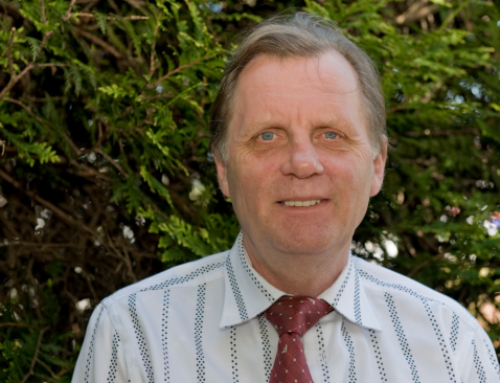
Leslie Brown
When you sit down with Leslie Brown to chat about her career in theatre, a few things are abundantly clear: her joy and curiosity have been her guides, and life never moves in a straight, predictable line.
Leslie’s story starts at the end of high school. Like many of us, she didn’t have a plan about what she would do next or where she would go. But just by chance, she heard about the three-year Radio and Television Arts (RTA) program at Ryerson Polytechnical Institute (now called the Toronto Metropolitan University) and thought that it might be fun. She was accepted and soon fell in love with radio production. “What intrigued me about radio was the fact that you can spark imagination in somebody in a way that doesn’t necessarily happen with film or TV,” she explained.
When she graduated from RTA, she figured she’d work in radio. But then she heard that the Banff Centre was looking for people to work in their box office. Since Leslie had never travelled west, she applied, got the job and spent the summer in Alberta. The theatre bug had bitten. After several years of going back and forth between Toronto and Banff, she finally settled in Toronto and joined the Tarragon Theatre. This opportunity gave her experience in front-of-house, stage management and production coordination. Leslie continued to expand her expertise backstage until she landed the job that would change everything: she joined Garth Drabinsky’s Show Boat production as one of 19 dressers. After nine exciting months, she joined IATSE.
For two and a half years, she criss-crossed the US with the company as the assistant wardrobe supervisor and met her future husband, who also worked on the show. After Show Boat closed, they lived like vagabonds, touring with productions or living in the cities where productions were staged. Then life’s responsibilities required them to move back to Hamilton, Ontario. Being close to Toronto provided Leslie the opportunity to work with the Canadian Opera Company and the National Ballet of Canada. She has since pivoted towards a different kind of production: she is a licensed minister for weddings and funerals. “There’s a weird kind of joy doing that. You’re helping to close a circle, and it’s a service, it’s not egotistical. It’s being useful to society in a way that’s good,” she explained.
Leslie has been a CEIRP member since its creation. She feels that the plan has served her well because no matter where she was working, contributions were being made and her investments grew. Recently, she and her husband converted their RRSPs into CEIRP RRIFs (Registered Retirement Income Funds). She said the process was really easy thanks to the support she received from her Investment and Retirement Specialist at Canada Life. He answered their questions and is available whenever they need him. We asked her what advice she would give to new CEIRP members at the beginning of their careers: “When you look at [the net amount on] your paystub, don’t resent the contributions that your employer is making on your behalf. Don’t even think about them. Don’t even look at that part of your paycheck. Just let it build up. Because you’re going to be in really good shape by the time you want to retire.”
We agree and think that’s great advice. Thanks Leslie!





